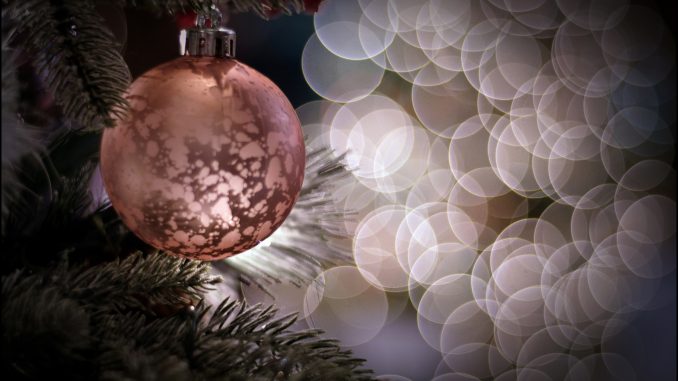
ADAPT And Rediscover the Charm of Vintage Lenses
By Dave Weber
Welcome to the exciting world of adapted lenses! This is where old, manual focus, modestly priced, prime lenses are rediscovered and given a new life on modern digital cameras! Adapted lenses are being used more and more for producing fine art images, especially when exceptional bokeh, color, and 3D-like depth are required.
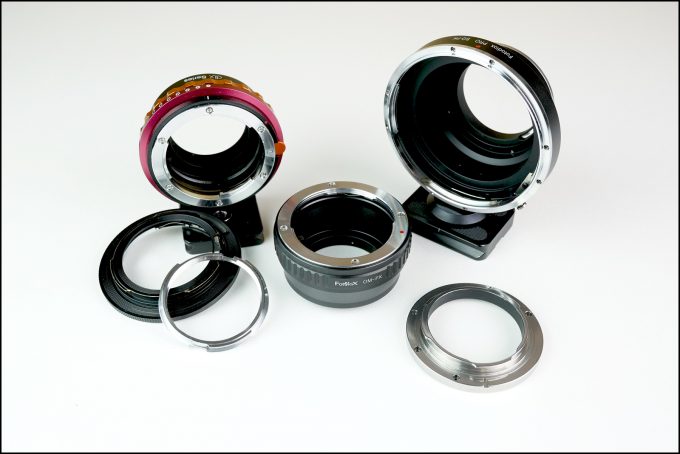
There are two ways to adapt a lens.
- Attach a temporary/removable mount to the rear of the lens. These temporary adapters can be “dumb” (having no electrical communications with the camera) or “smart” (having full electrical communications with the camera). The dumb temporary rear mount adapters are usually inexpensive and of low quality. The smart temporary rear mount adapters are expensive and do enable auto focus. Both varieties are fast and easy to attach and remove from a lens; but they are not as tight and secure as a permanent mount is. Temporary mounts by design are loose and bit sloppy. They can wobble/rotate/shift.
- Attach a new permanent mount to the rear of the lens. These permanent adapters are usually “dumb”. Their prices fall in between the two types of temporary adapters mentioned above. These permanent adapters at a minimum will require removal of the original lens mount, and will often require significant modification to the lens.
I prefer the permanent adapter option. Permanent adapters offer a more secure attachment to the camera. Premium permanent adapters, if installed properly, will result in no loss of image quality when used. The same cannot be said of the temporary/removable types of adapters.
7 Reasons to Adapt Lenses
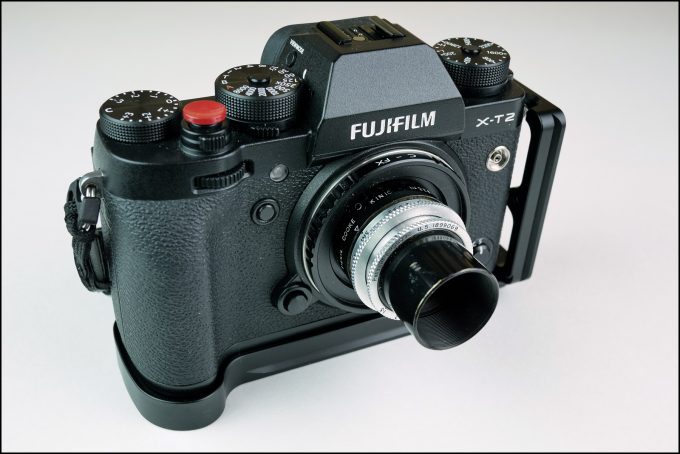
There are dozens of reasons why there’s a resurgence in using old adapted lenses. Below are the seven reasons why I sold my auto focus, modern zoom lenses and replaced them with vintage prime, manual focus glass:
- They don’t make lenses like they used to. In the old days, they used toxic compounds in their optical glass (toxic lead, radioactive thorium oxide). Due to environmental regulations this type of glass can no longer be made. Also, older lenses did not use exotic ED glass and aspherical molded elements in their designs. Modern computer designed lenses put a premium on sharpness at the expense of color fidelity, micro contrast, 3D-like depth and bokeh.
- Older manual focus lenses with metal construction last longer than modern lightweight plastic auto-focus zoom lenses.
- Vintage lenses use a simpler optical design. Most of my favorite lenses have optical elements numbering in the single digits. I don’t care the rendering produced by high element count lenses.
- Older lenses often have “defects” that are designed out of modern lenses. Defects like vignetting and field curvature that create depth in photos.
- Many individual old lenses produce images that have their own look, personality, soul, character, and signature. While images produced by modern lenses look mostly the same.
- Manual focus prime lenses are easy to repair and clean.
- Vintage lenses are cheaper than modern lenses. I often buy cheap older lenses that are defective (fungus, dust, scratches, oil on blades, stuck aperture, stiff focus) or being sold for parts. Often they are quickly repaired and good as new.
4 Reasons Not to Adapt Lenses
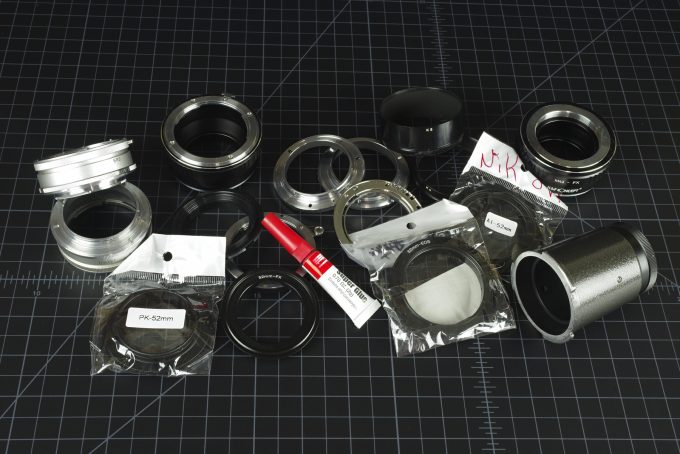
Of course there are equally valid reasons that lead some photographers to choose not to use adapted lenses. Below are the four main arguments for not using adapted lenses:
- You lose the lens’ image stabilization capability.
- The aperture must be set using the rotating aperture ring on the lens. It cannot be set using the cameras’ dials.
- You lose all electronic communication between the lens and the camera. EXIF data will not be recorded with the image.
- Auto focus will not work, the lens must be manually focused.
Adapted Lenses – Not for Everyone
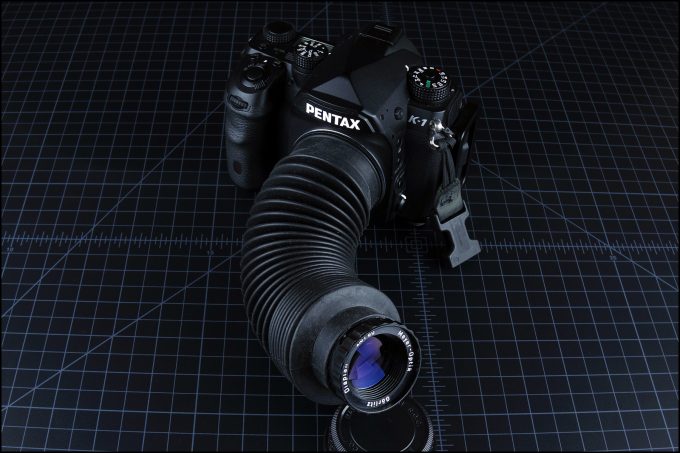
Each photographer must determine for themselves if adapted lens’ “advantages” out-weight their “disadvantages”. It’s an individual decision whose answer will vary depending upon your style of photography.
I primarily shoot still (or slow) moving subjects and have found that adapted lenses work great for me. A friend only shoots fast moving birds and wildlife. He needs fast, auto focus lenses for his type of photography – adapted lenses do not work for him.
Favorite Cameras
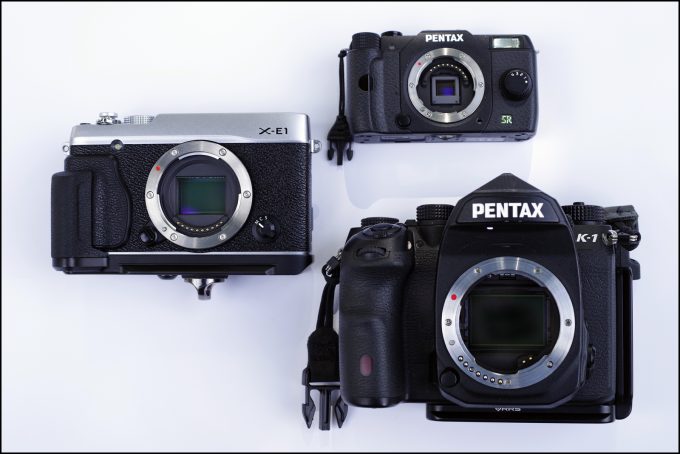
Most lenses that are adapted are fast, prime, full frame lenses. I prefer to use my “full frame” adapted lenses on a “full frame” digital cameras. While adapted full frame lenses can certainly be used on cameras with smaller sensors, you will lose some of the “goodness” of the full frame lens and underutilize its’ capabilities by using it on an APS-C or a Micro 4/3rds camera.
Recently, Panasonic released a new full frame camera called the Panasonic Lumix DC-S1R mirrorless digital camera. Its’ initial release price is $3,700 and it uses the popular Leica L mount. A quick search at B&H Photo Video’s website found 201 different adapters that are available for this new Panasonic camera! That’s more adapters than you can buy for any other camera.
My favorite camera for adapted lenses is the Pentax K-1 (mark I or II) DSLR camera. It costs $1,800 and there are 180 adapters available for it. In addition to these 180 B&H adapters, Leitax sells high-quality permanent Pentax adapters that will enable the following lenses to be used on K-1 cameras: Leica-R, Contax, Nikkor, Carl Zeiss, and Olympus Zuiko-OM. The K-1 has IBIS (in body image stabilization) which counters the loss of stabilization in an adapted lens. It also has a high resolution “pixel shift” shooting mode. Pixel shift greatly improves an images’ sharpness (typically the greatest weakness of vintage lenses).
Finally, all Sony full frame mirrorless cameras are pretty good at accepting adapted lenses because they have a shorter sensor to lens (aka registration) distance than DSLR cameras have.
Favorite Adapters
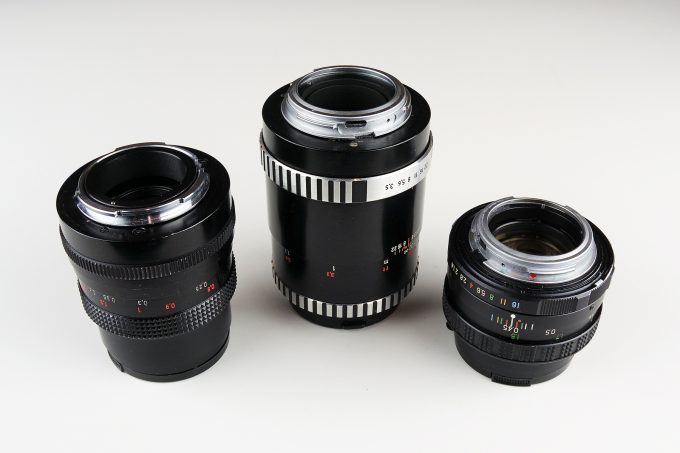
It’s important to use only the highest quality adapters. Cheap, generic adapters, made in China are sometimes poorly made. They sometimes have jagged metal burrs on them that can break off and fall inside your lens (or camera).
A manufacturing company located near Barcelona, in Catalonia, Spain called Leitax sells the best permanent adapters in the world! Given a choice, I will always choose a Leitax adapter over any other type of adapter. Leitax adapters are better made than the original OEM lens mounts that come on premium lenses. Currently, Leitax offers lens adapters for the following cameras: Nikon, Sony, Fuji X, Sigma, Pentax, and Canon.
My second favorite adapters are made by a German company called Novoflex. They too are of extremely high quality.
Favorite Lenses
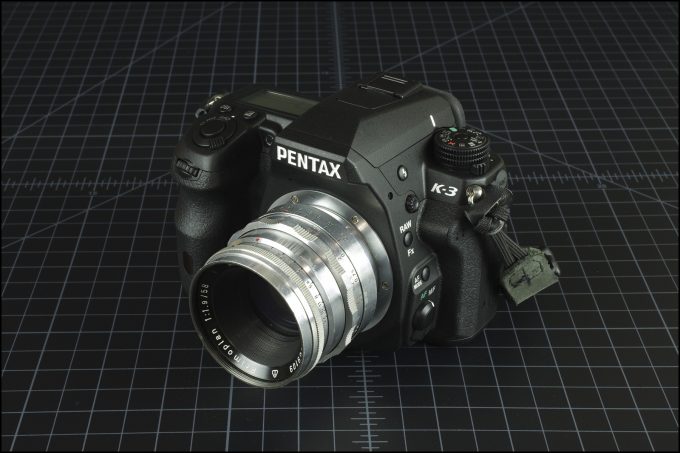
The most popular lenses to adapt are prime lenses that are manually focused. Most are fast (generally f/2 or faster) and have a rotatable aperture ring. The following are my all-time favorite adapted lenses:
- Olympus Zuiko-OM (100mm f/2, 50mm f/1.2)
- Contax Carl Zeiss for CY (85mm f/1.4, 35mm f/1.4)
- Meyer-Optik Gorlitz (MOG) M42 (58mm f/1.9 Primoplan, 100mm f/2.8 Trioplan)
- Fujinon (50mm f/1.4, 55mm f/1.6)
- Leica R (80mm f/1.4 Summilux, 50mm f/2 Summicron, 135mm f2.8 Elmarit, 180mm f/2.8 Elmarit II non-APO)
- Zeiss ZF “Classic” lenses (135mm f/2, 100mm f/2, 35mm f/1.4)
- Bronica SQ Medium Format (150mm f/3.5)
- MOG Diaplan 80mm f/2.8 Projector Lens
Troublesome Lenses
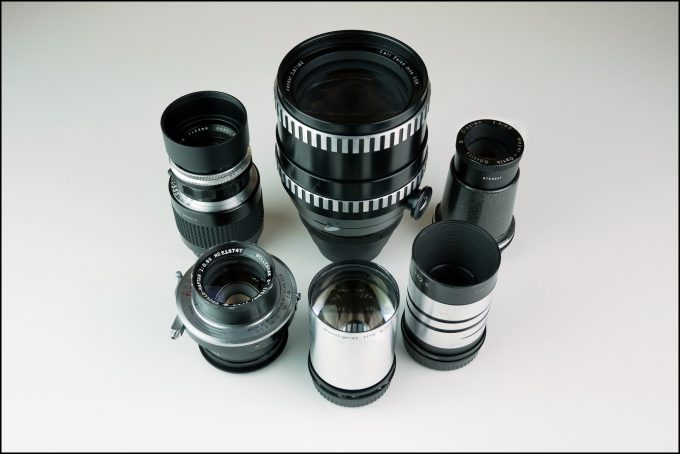
Some lenses are difficult (or nearly impossible) to adapt. For example, certain lenses will require two different adapters (see above photo). Using two adapters is not a good idea because you’ll have twice the number of mounting surfaces that can misalign. Two adapters also tend to make the lens unbalanced and front heavy.
Certain Nikkor F mount and Zeiss ZF mount lenses need their aperture rings ground down during adaption. While not difficult to do, I’m always hesitant about making such a permanent and highly visible modification knowing that it will reduce the resale value of the lens.
Many Olympus OM Zuiko lenses require custom plastic inserts and/or little springs be fabricated and installed in order to operate the aperture after adaption. These added steps are time consuming and tedious.
Some auto focus lenses require that the auto focus mechanism inside the lens be either removed or disabled. Doing so often permanently eliminates that lens’ ability to auto focus.
Topcor and Exacta lenses have mounts that are extremely difficult to adapt. I will never again purchase a lens with one of these mounts.
Unconventional Lenses
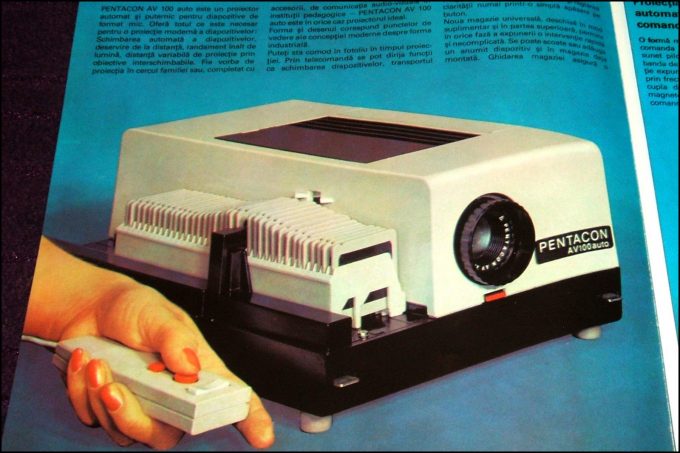
Back in the mid 1900’s, years before the invention of digital cameras, optical lenses were made for many different non-photographic purposes. They were used in: slide projectors, movie projectors, enlargers, X-ray machines, projection TVs, and even oscilloscopes.
Many of these vintage unconventional lenses have unique optical characteristics and unusual aberrations that cannot be matched by modern lenses. It’s these rare and special optical characteristics that make creative photographers want to experiment with these seemingly useless old lenses.
There are two ways that I use these atypical lenses. I adapt them for use on my digital cameras. Also, I’ll take them out and “lens whack” with them (https://www.youtube.com/watch?v=pZXTokYw54A ).
Most of these unconventional specialty lenses are difficult to adapt. By using creative engineering, I’ve been able to successfully adapt a number of TV, projector, X-ray and oscilloscope lenses.
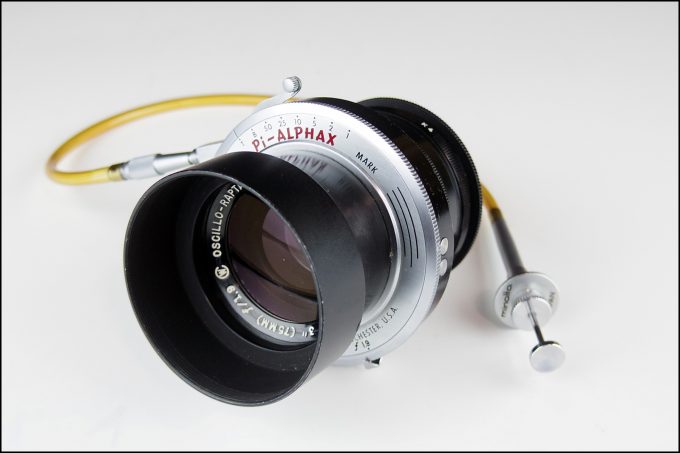
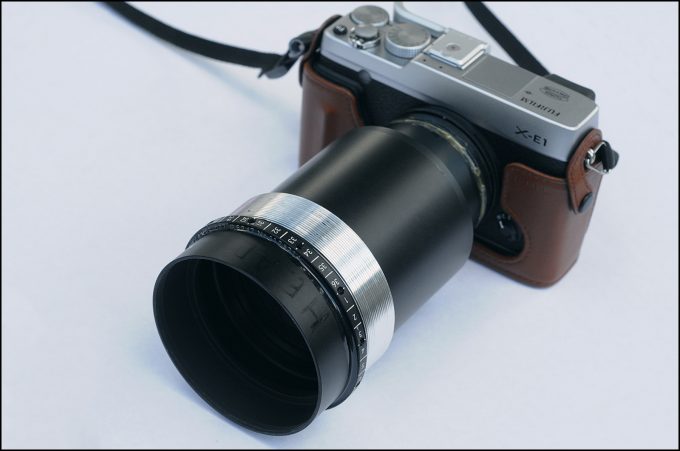
Nine times out of ten, the image quality produced by these home-built Frankenlenses disappoint. But every once in a while a “happy accident” occurs and the images they create are out of this world!
Join Our Club
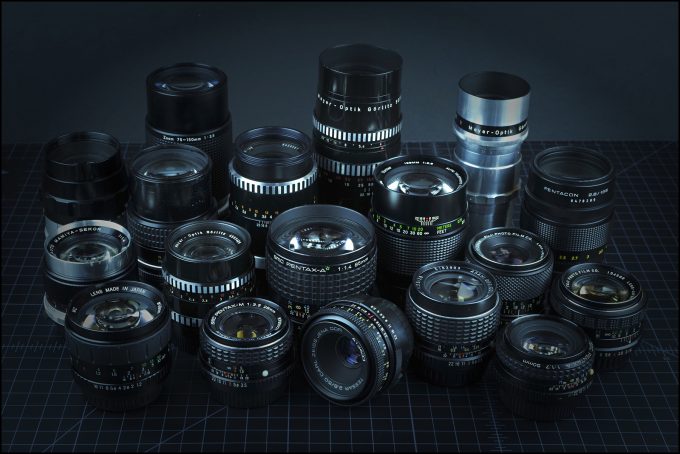
If you like to capture photographs with personality and exceptional bokeh/color/depth, consider using adapted vintage lenses on your digital camera. The images you capture will be unlike those produced by your modern lenses.
Most of the popular Internet photography blogs (and Flickr) have established groups devoted to vintage lenses. Join them, ask questions, and share your adapted lens photos there.
If you need assistance adapting a lens, send me an email. I might be able to help.
In the comments section below, please share your experiences with adapted lenses. Also, let us know if you’d like to see more articles on adapted lenses (maybe one on “how to” adapt lenses?).
Dave Weber lives in Northern Wisconsin, USA. In late 2019 and again in late 2020 he’ll be publishing two new on-line photography courses for a South African company called Udemy.com. They will contain lots of original photographic tips and techniques that are not found elsewhere. Be sure to watch for them HERE


I have adapted my old OM Zuiko 50mm f1.2 on M4/3 OM cameras and a Fuji XE-1.
While the bokeh is very nice wide open, I don’t find the images very useable or pleasing, at least as .jpegs, until I have stopped down to at least f4, preferably f5.6 of f8. I guess my sample is not very sharp at all wide open. I have found the OM Zuiko 24mm f2.8 lens, on the other hand, very nice even wide open on the Fuji XE-1 and find it a very nice compact lens. I have only used the inexpensive Fotasy or KEF adapters so far. I have not used either lens as of yet on a FF digital body. I still have a number of Nikkor MF lenses and have enjoyed them frequently, AI and non AI, on my Nikon Df. I get my old MF lens “fix” for the most part from using the older Nikkors on the Df and 750 bodies. I guess that is not really “adapting” at all but it does provide one with the vintage lens “character” and more contemplative, slow photographic experience without an extra adapter…and the older Nikkor lenses are so solid and beautifully made.
K&F adapters are just as good as changing the mount on a lens. I have never had any problems with these. I am not sure why you think that removable adapters are poorly manufactured. That has not been my experience.
I guess it all depends upon how demanding you are of your gear’s performance! I shoot for making LARGE prints, not for social media or posting on the Internet. As such, I demand much of my gear. These days I’m only shooting in the high resolution, pixel shift mode from a tripod for the ultimate in image quality.
Nice article but Dave I think you are underselling the value of “dumb” adapters. They are easy to use and I’ve had no issues with the cheap Chinese one’s I use on my Fuji X-T3.
To me it makes no sense putting a $%20 adapter on a $2,000 lens.
The adapter has no glass, and no bearing on IQ so doesn’t matter if you spend $20 or $500 on an adapter.
Steve, that’s not been my experience. I’ve personally found that the better/more-expensive temporary adapters fit tighter than some of the cheap ones and have less wiggle/wobble/play/rotation.
Lloyd Chambers has published on the importance of high quality surfaces on lens mounts. He claims that tiny imperfections on the order of only 10 or 20 microns in the lens mount can impact an images’ quality.
That’s why I use the Novoflex adapter. The Leica one is not necessary as it’s not any better made and it’s only benefit is that it reads the 6 bit code for use on an SL. My $30 Canon to SL adapter is rock solid and fits like a glove and has no issues. It’s hit or miss really but still with Novoflex or Voigtlander or Leica for the best adapter build quality for sure.
Phillip Reeve with his great site brought my attention to vintage lenses, and one day I decided to just try it out. Ordered a Minolta MD 35-70 f3.5 Macro via Ebay for 90 Euros to see what all the fuss is about.
Took first test shots – blown away. Those pictures had CHARACTER, and manual focus actually wasn’t harder, but more fun!
Vintage-aholic since then.
Thanks for sharing the useful information. I myself have some Minolta/VM lenses adapted to a Sony A7s.
Do u have any tips to figure out if any given adapter causing loss/degradation in IQ?
Thanks a lot, Dave. Very informative and well explained. I agree with you on the use of old lenses, and the appreciation of the K1. I see that you show a Pentax Q too, and my question is, how old lenses fare in the small camera and sensor? Thanks again and regards from Spain.
JP, I tried a 300mm f/4 lens on the Q using an adapter. Used it on a very stable tripod. Unfortunately, the images it produced were not very good. I’d call them unusable.
Please don’t forget that all Sony A7 mk2 and upwards have sensor stabilisation. I use numerous “vintage” M42 mounts adapted to my A7R mk2 and the results are wonderful. As you say, it is character – that elusive factor – which gives these lenses the edge in some circumstances, but not always. I use Zeiss Batis and Loxia prime lenses and l hope you wouldn’t class those lenses as without character. (and they are built to last)
Alan, in my article I said that Sony full frame cameras are good to use for adapted lenses. But I guess that you did not read that…
Love the bokeh of the bulb & Christmas tree. Reminds me of some of the older lenses I still own. Which lens did you use for that shot?
And by the way, great, interesting article!
58mm f1.9 MOG Primoplan (new version)
Would you recommend the newer version of the 58mm Primoplan over getting an older version?
I have gone a step further and adapted a DSLR with a split focussing screen to aid the manual focus.
Also use the OM lenses through a single adapter ring with no other modifications.
That was a truly interesting and refreshing post!
Thank you!
My friend David Llado at Leitax in Spain read this article and asked me to clarify the following…
“When you said that the permanent mounts require always to remove the original mount, that is true for Pentax and Nikon, but not for Canon and Sony-E. Also Nikkor/Zeiss ZF lens’ aperture rings only need to be shaved down when used on a Pentax camera.”
One of the many reasons I like Leitax is David Llado. He’s the most knowledgeable person I know when it comes to adapting lenses. Also, he’s very responsive to all customer questions.
This article is a good reminder that there are millions of lenses out there that cost very little money that give million dollar results.
A lot of professionals have their ‘secret’ lenses, and they pay for themselves within a single hour of working. I think having a secret lens or two is a healthy thing. I usually love sharing information with others, beginners or pros, but sometimes you just want to keep a little secret to yourself. 🙂
This overview was quite comprehensive but no doubt there’s even more to explore. For example, there are ways to use lenses with small image circles on large sensors. Not easy, but possible.
I have a serious disagreement though with your view about vignetting and curvature of field – in no way are those two characteristics positive ones! Just about every cinematographer I know of would never allow his images to vignette, and the same standard should apply for photography. Cinematographers also see value in old lenses, but mediocrity is not acceptable, except for a unique effect here or there.
We’ll just have to agree to disagree.
On most of my photos I add extra vignetting in post.
I am a fan of the KP mount. Right now I have a Tokina EL 28mm 2.8 on my Oly EM10. It’s A pleasure to use. It was new in the box for $25. My Industar 50-2 is great with extension tubes. I also have a Sears 50mm 2.0 KP mount. Most likely it is a Ricoh. My Yashinon DX 50mm 1.7 delivers brilliant color and is very sharp. It had a bent filter ring which was a snap to repair. $20 shipping ncluded.
Great ! Simply great. Thanks so much